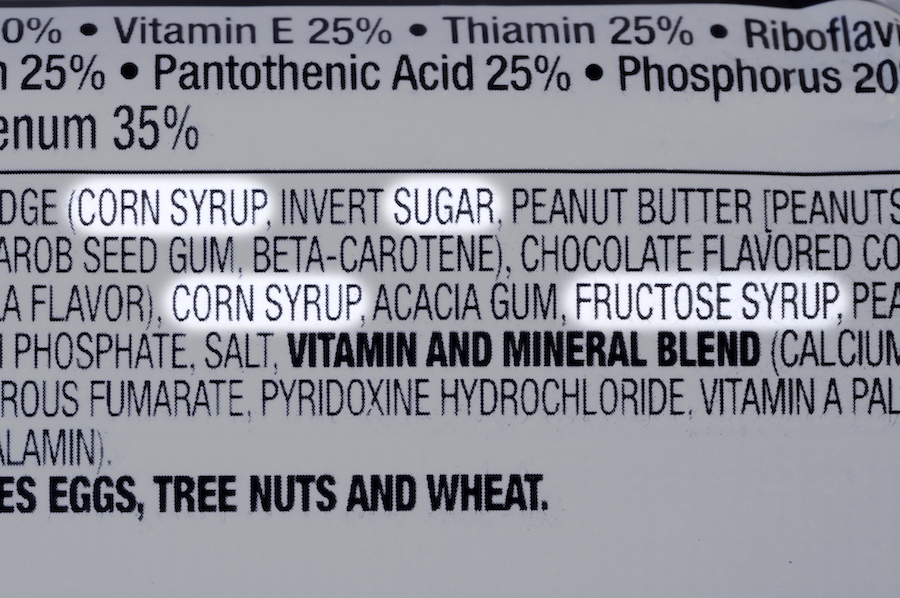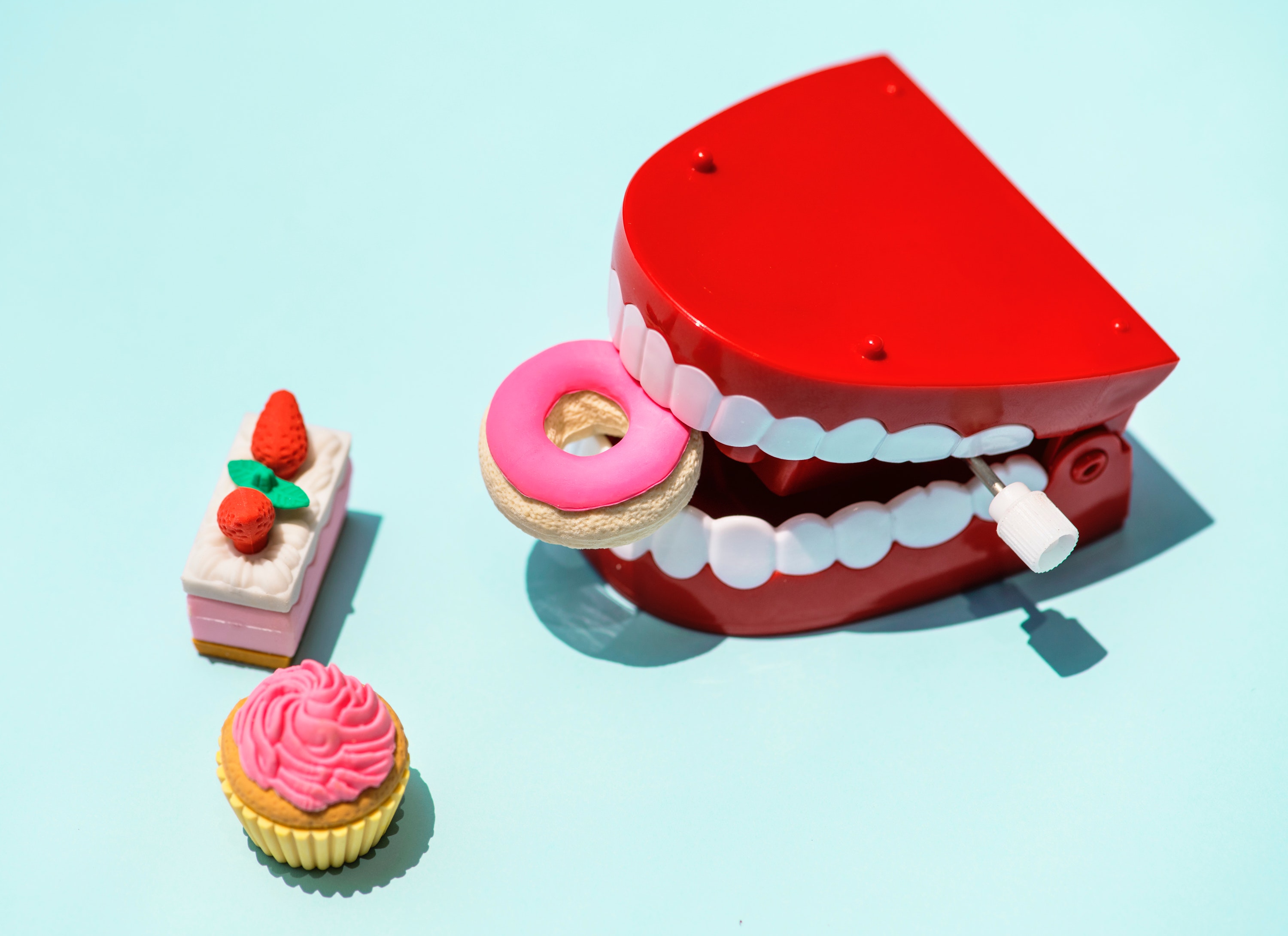
Reducing Sugar Snacking for a Healthy Smile
Alaina Hart MPH, CHES – Senior Health Educator
“If you keep eating that, you will rot your teeth out!” Growing up, many of us heard this warning about sugary foods, and we may be repeating it to our children. Though the phrase sounds exaggerated, it is based in fact. Now, more than ever, children have greater access to sugary snacks. According to the Department of Health and Human Services “sugar is the most popular ingredient added to food in the U.S.” On average, Americans consume about 152 pounds of sugar each year, which is about 6 cups of sugar per week. Bacteria in the mouth use the sugar in drinks and food to produce acids which causes tooth decay.
February is Children’s Dental Health Month, which is a great time to explore ways to reduce sugar snacking and promote healthy habits.
We know that brushing, flossing, and visiting the dentist regularly is a great recipe for a healthy mouth. Paying attention to the foods children consume and keeping their teeth in mind when choosing drinks and snacks also makes a big difference in their dental and overall health. Here are four ways to reduce sugar in your diet for a healthier, brighter smile.
1. Read the fine print. Watch out for added sugars.

Don’t worry about the natural sugars found in fruits and some dairy products. Packaged or processed snacks and meals, however, may have added sugars, which can be dangerous when consumed in large amounts. The American Heart Association recommends that children ages 2-18 years old should have less than 25 grams or 6 teaspoons of added sugar a day.
Almost all foods contain sugar, so it’s almost impossible to eliminate every food with sugar. Foods with natural sugars may also contain important nutrients and vitamins that our bodies need. Natural sugars can enhance flavor. To determine which foods have added sugar, read nutrition labels carefully. Many food labels now have the line “added sugars” to help differentiate between naturally occurring sugars and added sweetener. Keep this in mind and work towards a balanced diet for you and your kids.
2. The real squeeze on juice and soda.
Juice, even 100% fruit juice, tends to be higher in sugar and calories when compared to eating actual whole fruits. The American Dental Association suggests that water and milk are the best drink options for little ones and should be offered before juice. The American Academy of Pediatrics suggests that “children under one year old should not have fruit juice in their diet at all.”
What’s the verdict? When you can, try making whole fruit a priority over juice and limit the amount of juice children drink. For tips on how to add more fruit into your daily diet, check out this site.
But what about soda? Soda provides no nutritional value, is full of sugar and calories, and can lead to tooth decay. If your child is craving a bubbly drink, the American Dental Society suggests sparkling water as a good alternative to soda: “sparkling or not, plain water is always the best choice.”

3. Tricky sticky foods.
When it comes to snacking, sticky foods are not your teeth’s friend. Parents are often surprised to learn that sticky snacks, such as dried fruit, have a sugar content that is closer to candy than it is to fruit. Dried fruit and fruit snacks pose potential problems for teeth because they stick to teeth longer than other foods. Though these are promoted as healthy snack options, eating these should be followed by good brushing and flossing.
4. Lead by example.
Want to help children develop good dental health habits? These habits start with role models. From brushing and flossing to making healthy food choices, children will mimic their caretakers’ habits. Find fun and creative ways to involve the whole family in building healthy habits for a healthy mouth and body. The ADA has fun tips to make brushing fun for kids. Involving your children early and often with these tips in mind will help your kids on their way to a healthy smile that will last a lifetime.
Resources:
American Academy of Pediatrics Recommends No Fruit Juice for Children Under 1 Year
American Dental Association: 6 Ways to Reduce Your Child’s Sugar Snacking
How Much Sugar Do You Eat? You May Be Surprised.
Is Sparkling Water Bad for My Teeth?
Keep Gruits Handy. United States Department of Agriculture.
Sugar Recommendation for Healthy Kids and Teens
Classroom Crio Lesson
The Poe Center has partnered with SAS through Curriculum Pathways to provide online access to health science and health education lessons at no cost to teachers across the State of North Carolina. Designed to complement its health education curriculum, the Poe Center’s programs and online content are aligned with the North Carolina Department of Public Instruction’s Healthful Living and Science Essential Standards.
Healthy Teeth, Healthy Smile
Grade Level: K-5th grade
Program Length: 15-45 minutes
This lesson breaks down the different parts that make up the tooth, how and why cavities form, and tips to keeping teeth clean. Check out our library of Crio courses today!
Featured Poe Program: Sheriff Tuffy Tooth
Grade Level: Preschool – 1st
Program Length: 30 minutes
Sheriff Tuffy Tooth really speaks to kids about the importance of tooth brushing, eating healthy foods, and visiting the dentist. Invite the Sheriff, an animated talking tooth and his deputy “Bucky the Horse” to visit your school or group for a one-of-a-kind experience!
Schedule a visit online or call 919-231-4006.
